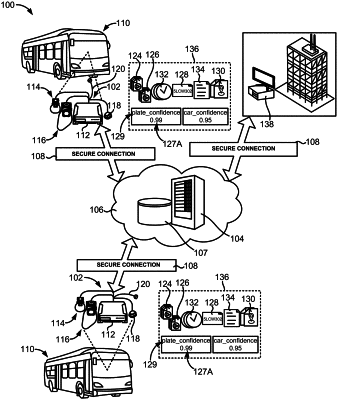| CPC G06V 20/54 (2022.01) [G06V 10/764 (2022.01); G06V 10/82 (2022.01); G06V 20/58 (2022.01); G06V 2201/08 (2022.01)] | 30 Claims |

|
1. A method of automatically evaluating evidence of a potential traffic violation, comprising:
receiving, at a server, an evidence package of the potential traffic violation from an edge device, wherein the evidence package comprises one or more event video frames and one or more license plate video frames of videos captured by the edge device showing a vehicle involved in the potential traffic violation, wherein the evidence package further comprises one or more first classification results obtained by feeding the one or more event video frames and license plate video frames into one or more deep learning models running on the edge device, wherein each of the first classification results is associated with one of a plurality of features;
inputting the one or more event video frames and license plate video frames into one or more deep learning models running on the server to obtain one or more second classification results, wherein each of the second classification results is associated with one of the plurality of features;
inputting one or more of the first classification results and their associated features, one or more of the second classification results and their associated features, or a combination thereof into a decision tree algorithm to obtain a plurality of contributing scores, wherein each of the contributing scores is associated with one of the plurality of features;
calculating a final score based on the contributing scores; and
evaluating the final score against one or more predetermined thresholds to determine whether the evidence package is automatically approved, is automatically rejected, or requires further review.
|